Where the Wild Things Are: An Interview with Ken Millett
Untangling the mathematical complexities of knot theory
Margaret Wertheim and Ken Millett
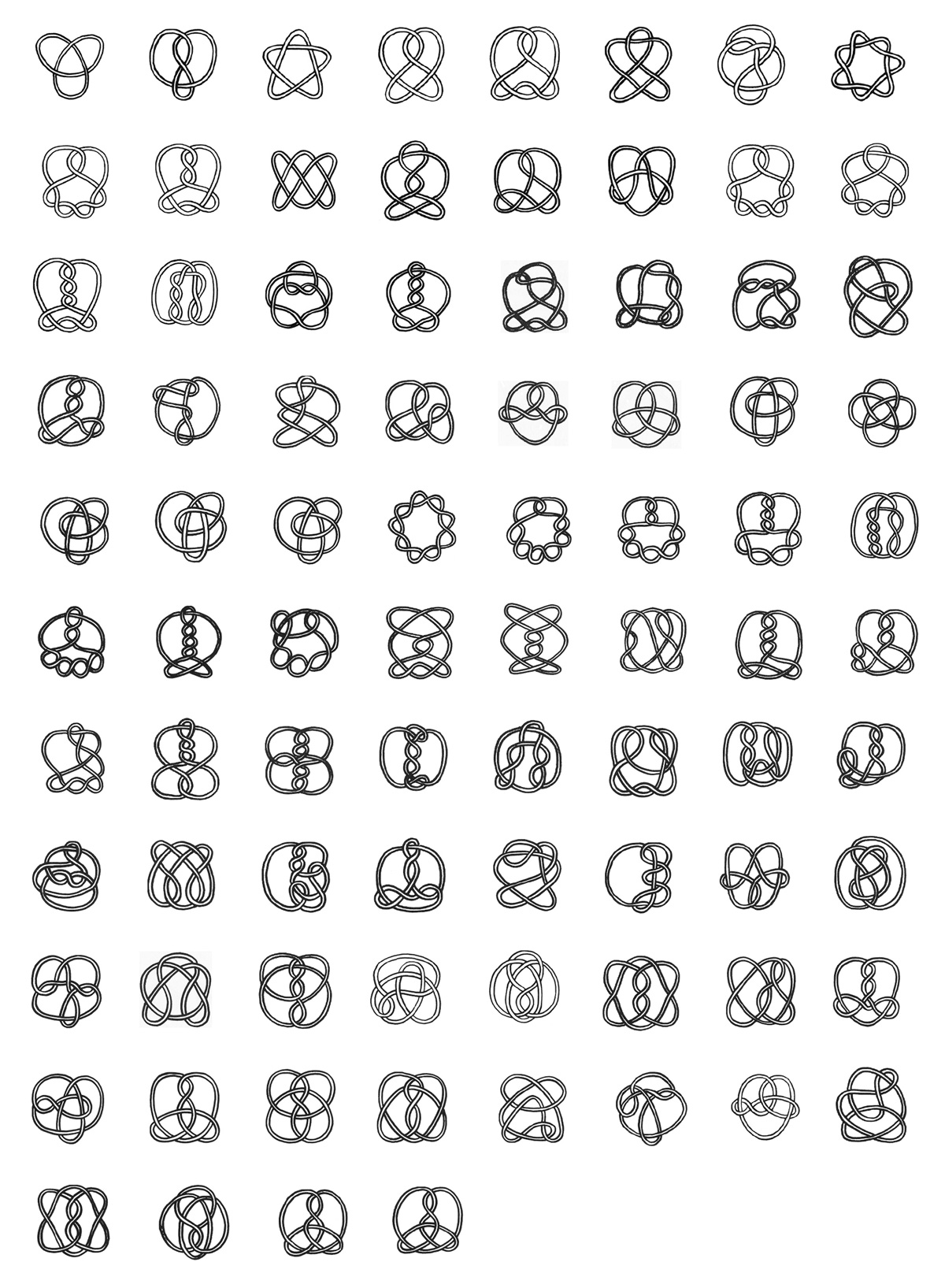
In mathematical lore, a topologist is a person who cannot tell the difference between a coffee cup and a donut, both objects being topologically the same. Of the many things topologists strive to categorize, one of the more enigmatic is knots. Though knotting is one of humanity’s oldest and most widespread activities, at first glance it seems an unlikely subject for the formalisms of mathematics. But at the end of the nineteenth century, mathematicians began to classify these twisted and braided forms. Despite some initial success, by the 1960s knot theory had stagnated—many of the questions being asked were simply too difficult to answer. In the 1970s, however, the field was revitalized with the introduction of new analytic methods. In addition to theoretical advances, the insights of knot theory are now being brought to bear on problems in biology and chemistry, specifically to understanding the structure and behavior of DNA, proteins, and polymers. Theoretical physicists studying subatomic particles also propose that the world is composed of knot-like contortions in spacetime. Ken Millett, a professor of mathematics at the University of California, Santa Barbara, is a leading knot theorist and a pioneer in the application of knot theory to macro-molecules. Millett is one of the co-discoverers of several classes of “knot invariants,” polynomial equations used to classify different knot types. His research interests include polygonal modeling of knots, the spatial characteristics of physical knots, ideal knots, and measures of complexity in knotted DNA. Millett is also a leader in the field of mathematics education and is actively involved in math outreach to minority communities across southern California. In November 2005, he gave a talk at the Institute For Figuring in Los Angeles—before which he was interviewed by IFF director Margaret Wertheim.
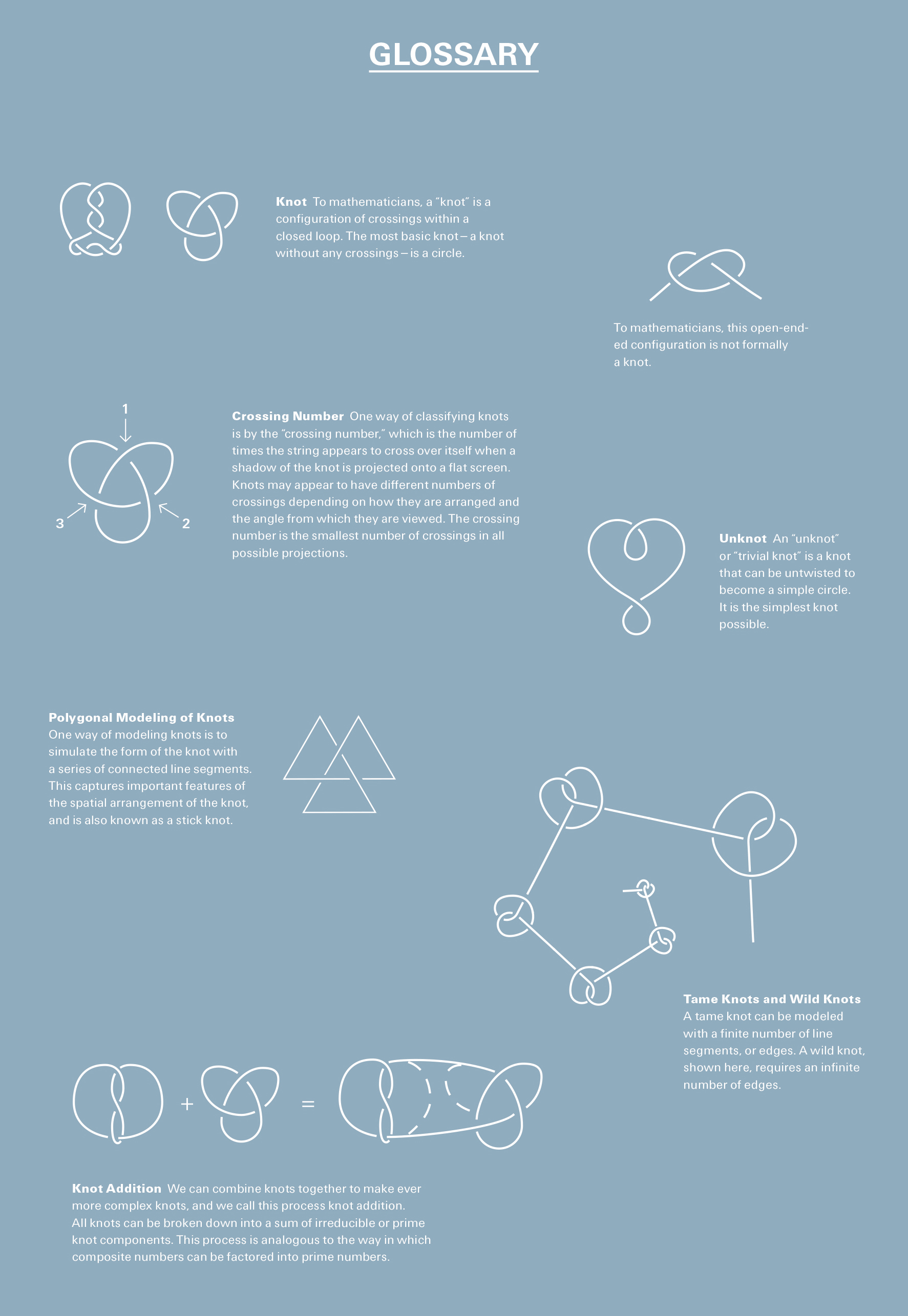
Cabinet: How did mathematicians become interested in knot theory?
Ken Millett: My understanding is that the mathematical origins came roughly with the studies of Carl Friedrich Gauss (1777–1855) involving electromagnetism and what would happen when an electric current is flowing through a wire. That would depend upon the configuration of the wire in space. That led later to the work in England of Lord Kelvin and Peter Guthrie Tait at the end of the nineteenth century. They were really the first to set about classifying configurations of knots, in part because they believed that atoms might be knots in the ether.
Why did anybody think knot theory had application to atoms?
At the end of the nineteenth century, scientists realized the world of knots was a discrete world, that is, different knot types could be distinguished from one another. This raised the question of whether knots were a good model for atoms, which seemed to have a similar character—there are hydrogen atoms and oxygen atoms and carbon atoms and so on, each with its own characteristics. In fact, there’s a continuing interest in this kind of discussion today with string theory that also relates basic particles to complex knot-like configurations.
How do mathematicians go about formalizing something like tying bits of string?
Because it’s a human endeavor, the initial efforts were kind of intuitive. In order to capture knotting in a piece of string for example, it’s necessary to take the two ends and bind them together so that you have a closed system. If you don’t do that, you could move the knot off the end, making it disappear as it were. The first questions that arise for mathematicians are basic questions, such as: What does it mean to think of two knots as the same or different? That’s a fundamental question that would separate notions of topology from geometry, and you would get a different answer depending on what kinds of equality or similarity or equivalence you chose. Once you have that, then the question comes as to the size of the population: How many different knots are there? How would you distinguish between two instances of the same knot in different forms? The mathematics comes with trying to create a system and a process for identifying whether or not two knots are equivalent. And also from the desire to establish a complete classification, much as you would do with animals or other things in science. Mathematicians want a complete classification and we’re still struggling with ways in which to do that effectively.
The population of possible knots is infinite, but how far have mathematicians gone in terms of classifying them? And how do you gauge how far you’ve got?
In mathematics, the issue of “how far along you might be” is a very sophisticated question. We know lots of different ways of organizing information about knots. Since it’s a multidimensional enterprise, it’s hard to say how far we’ve got because from some perspectives we’re doing quite well, but if you change the question a little bit, then we’re not doing so well. If you organize knots, as was done classically, in terms of their pictures or diagrams, and you judge complexity in terms of these diagrams, then we’re not doing well. The classical way of studying knots is to project an image of each knot onto a wall, which reduces it to a planar diagram. When you do that, you see a bunch of under- and over-crossings of string within the knot. Now, mathematicians say we should look at the picture with the fewest number of these crossings, what we call the “crossing number.” Looking at knots this way, we’re up to seventeen crossings. Even at this level there are enormous numbers of possible knots—for seventeen crossings, we believe the number to be 8,053,249. The computational task of going beyond that is formidable, and I’d have to say that methods we have for distinguishing different knots at this level are really quite primitive. As you increase the number of crossings, it becomes exponentially more complex and at some point becomes computationally intractable.
Can you explain how mathematicians try to distinguish between different knots?
Aside from the crossing number, which is one feature, another measure is to look at how you can model a knot with the smallest number of line segments or edges. This is called polygonal modeling. You can think of this as taking a segmented ruler, like a carpenter’s rule, and bending it around to form a knot. Now we can ask: Can you model a knot from four edges? It turns out you can’t. The simplest knot is the trefoil or cloverleaf knot, and it takes six edges to model that. All knots can be modeled from some number of edges—this is also what we call a stick knot—and the question is, “How many edges do you need to represent any particular knot?” That’s another measure. Yet another one is to imagine that your knot is inside a sphere. For mathematicians that’s not a very exotic task. Now take the “complement” of the knot—that is the part of the space that’s not the knot. In effect you’ve hollowed out the core of the sphere and created a knot-shaped hole in it. For all except a well-understood family of knots, this complement space can be given a hyperbolic structure and associated with that is a hyperbolic volume. This volume is another measure of the knot.
I should also mention another approach I’m partly responsible for. There are certain algebraic or polynomial equations that we call “knot invariants” that are associated with each different knot. In knot tables, you’ll see lists of numbers that define these equations. For many knots this is the main way we have of characterizing them. It’s a pretty chaotic system with all these different properties—there are even more than the ones I’ve just described—and it would be good if we could identify which are the core properties from which the others derive.
There are knots that are “wild” and others that are “tame.” Can you tell us what a wild knot is?
I would explain it by giving you an example and then saying, “Think like that.” Imagine I take a bunch of beads and we’re going to make a sort of necklace. Now, I take the first bead and tie a little trefoil knot inside it. Now, next to that I attach another bead, but this time with half the radius, and inside that I make a smaller trefoil knot. Then, next to that, I put yet another bead with half the radius still. Now, imagine I take an infinite sequence of these beads, each one half the size of the one before, and each with a tiny trefoil knot inside. At the end, I wrap the string around so it’s closed. What makes this a wild knot is that it’s composed of an infinite sequence. This is actually one of the simplest examples you could make. Another way of describing a wild knot is that it can only be modeled by an infinite number of line edges. The opposite of wild is tame, which means you can build it from a finite number of edges, like the trefoil knot I mentioned before. Wild means you can’t.
Do wild knots exist in the real world?
In the physical science world, wild knots never happen. The reason is there’s a smallest scale at which you can do things. For wild knots, you have to be able to go smaller and smaller, until it’s infinitesimally small. But here’s another question: A knot is a one-dimensional structure; do such things exist as two-dimensional structures? It turns out the answer is yes. We can have what’s called a “wild sphere.” There was confusion about this. The mathematician who first wrote about it, James Waddell Alexander, said, “No, it’s not possible.” Then later, in 1924, he published a rebuttal saying, “Here’s an example”— which is now called Alexander’s Horned Sphere. Just as a wild knot cannot be modeled with a finite number of line segments, Alexander’s Horned Sphere cannot be constructed from gluing together finitely many triangles. It cannot be triangulated—it’s an infinite polyhedral object.
Do wild things occur in all dimensions?
I am embarrassed to say I don’t know for sure. I suspect the answer is yes. I have some recollection that strange things happen in higher dimensional space that might make things easier.
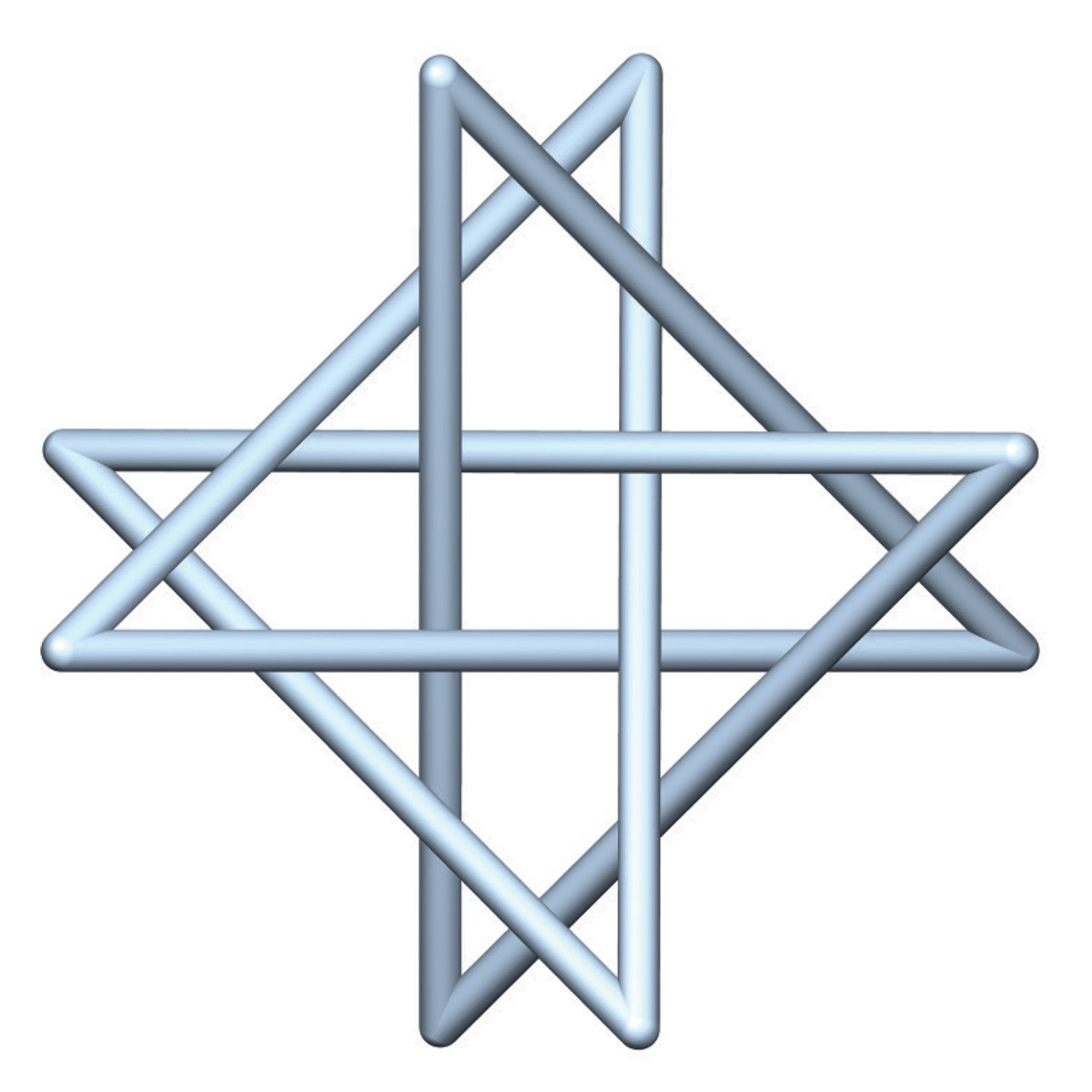
But let me tell you about another really charming problem. Imagine that we’re going to make a knot out of a polygon—we’re going to model it with, say, thirty-two edges. Now we’re interested in what are the different knot types you can make with precisely thirty-two edges. There’s a kind of space of them, a world of them, a population. And you can sample from them, sort of interview each one and ask, “What kind of a knot are you?” This is a very classical statistical kind of problem: you have a population and want to identify the constituents. We know there are a finite number of knots you can make with thirty-two edges; what we don’t know is whether that number is 600, or 1,000, or 10,000. There is no mathematical theory yet that’s even been able to give us a meaningful estimate.
You must have an answer up to a certain number of edges?
Eight. That’s all we know about right now. It turns out nine is already too complicated. And even for eight edges, there’s one case we don’t know for sure.
For eight edges how many knots are there?
For eight equal-length edges, there are eight or nine different knots, apart from the “trivial knot,” and we don’t even know whether it’s eight or nine.
It seems extraordinary that something so simple could be so difficult.
It’s humbling.
Can you explain the idea that knots can be seen like numbers—you can add them and subtract them, and there are even the knot equivalents of prime numbers.
That is a theorem that goes back to the 1960s. Remember how we can construct a wild knot by making knots inside little beads? Well, this method also tells you how to combine knots. If you take one knot and put it inside a bead, and a second knot and put it inside a bead, and so on to make a little necklace, that process with some generalization also shows you how to take a knot and reduce it into its atomic pieces—its indivisible parts. The way it works is this: take a knot and let us try to find a sphere that intersects with it at two points, so that inside the sphere is one piece of the knot and outside is another. The technique tells us that given any knot, however complex, we can find a finite collection of spheres so that inside each sphere there is a piece of the knot that cannot be broken down any further into simpler pieces. You can move the spheres around so it looks like a chain of beads, each with a little knot inside. Every knot is composed of a unique set of these “irreducible” knots. It’s exactly like building up composite numbers from prime numbers. These irreducible knots are the primes of the knot world.
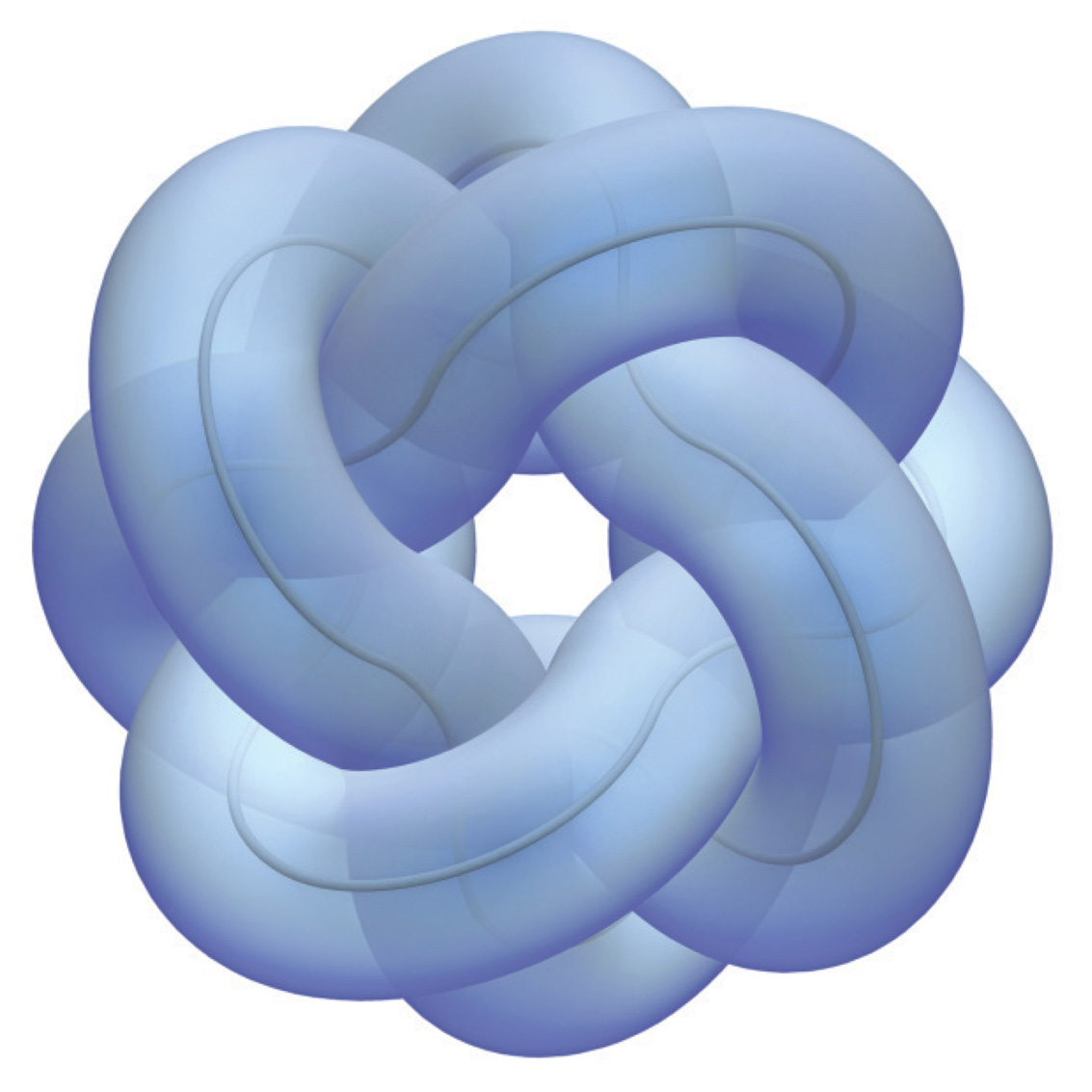
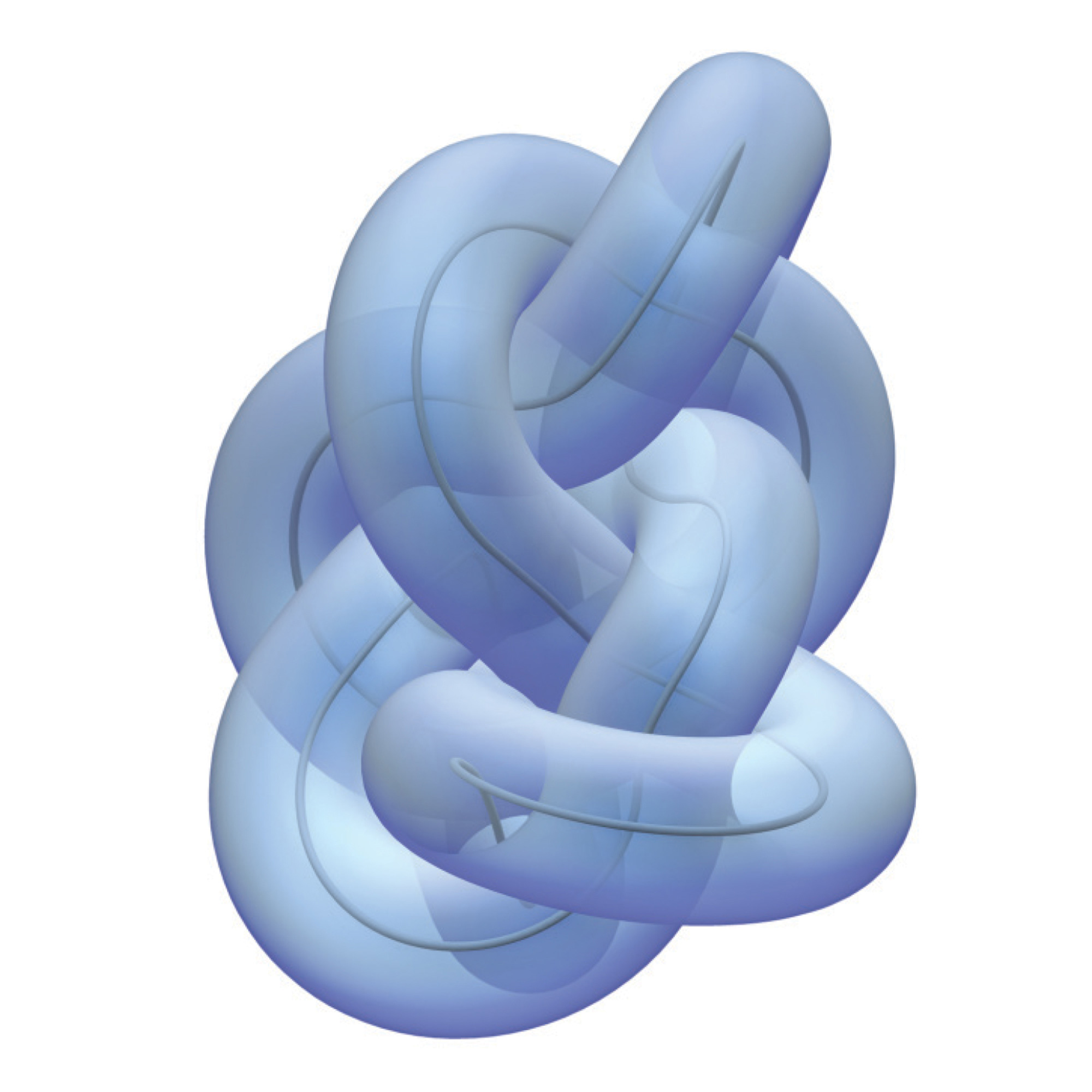
The unique factorization of knots is analogous to the unique factorization of integers. With numbers, we call it multiplication, but with knots we call it addition. One interesting thing about knots is that you can never cancel out a knot by adding it to another knot.
So there’s no knot equivalent of negative numbers?
No, there’s not. But it’s more accurate to think in terms of reciprocals: If you take the number 2, then its reciprocal is 1/2, and if you multiply 2 and 1/2 together, you get 1. The knot equivalent of 1 is the trivial knot, or what is also called the “unknot.” But you can never cancel out any knot and get back to the unknot by adding it to another knot. There is no such thing as knot reciprocals.
Knot theory began out of an interest in electromagnetism and atoms, but then it became pretty much a theoretical subject. Now it’s coming back to applications. Can you comment on that?
Knots have historical roots going back to the time people first tried to attach things together using strands of fiber. We have pieces of knotted material going back tens of thousands of years. The physical properties of knots are very important for practical things like fishing and hauling boats, but also because they occur in important biological and physical systems such as polymers and DNA. This is what drives a lot of my research now—the physical or spatial properties of knots and their evolution in biological systems. DNA, RNA, and proteins can be quite long structures and so their positions in space can be quite complicated. If you take an electron micrograph of these things, you will find lots of complicated structures and from a practical point of view we’d like to be able to analyze them.
Are pieces of DNA and RNA actually knots? Don’t knots have to be closed?
In nature there do exist DNA structures that are closed—these are plasmids and they occur in viruses, etc. But it’s true that a lot of DNA is open-ended. Some of the work I’m doing now is to expand classical knot theory so that we can deal with the nature of knotting in open strands. Here, we believe the critical thing is to capture the nature of the knotting that occurs if you freeze their position and we now have a pretty robust strategy for doing that.
Another example has to do with whether or not certain kinds of enzymes can act upon DNA, whether they can access specific regions where they could function and change the properties of the DNA. This is more a geometric issue than a topological issue. It changes with the geometry and flexibility of the materials. Why is this important? Well, some structures are known to be critical in diseases like cancer, so the ability to control those is a fundamental medical issue. There are certain molecules, for instance, that have a part that’s hydrophobic (water-hating) and other parts that are hydrophilic (water-loving). The hydrophobic parts try to surround themselves so that they are protected from the water by the hydrophilic parts. Now this material is flexible, like a string of spaghetti, so one question is, “How will that spaghetti organize itself?” How will it fold itself up in space in order to best protect the hydrophobic parts? What are the spatial properties of a configuration that does this best, and would there be knots in this structure?
How complex are DNA knots?
For biological systems we are definitely interested in very large knots. As we’re doing our analysis, I’ve got knots on my computer with crossing numbers of 5,000. Those are pretty complicated.
Does it astonish you that we can start out with something as apparently simple as a piece of string and 150 years later mathematicians haven’t remotely exhausted what can be understood about it?
As I look at the history of mathematics, there are many problems we are only beginning to know how to ask, but we don’t yet have the intellectual framework or tools to answer. The challenge often is to figure out the questions where you can actually make progress. That’s a real art form that successful mathematicians know how to do. We learn how to ask questions for which we currently have a hope of answering. We can work on impossible questions forever and not get anywhere—the art is to ask those questions that we can possibly answer.
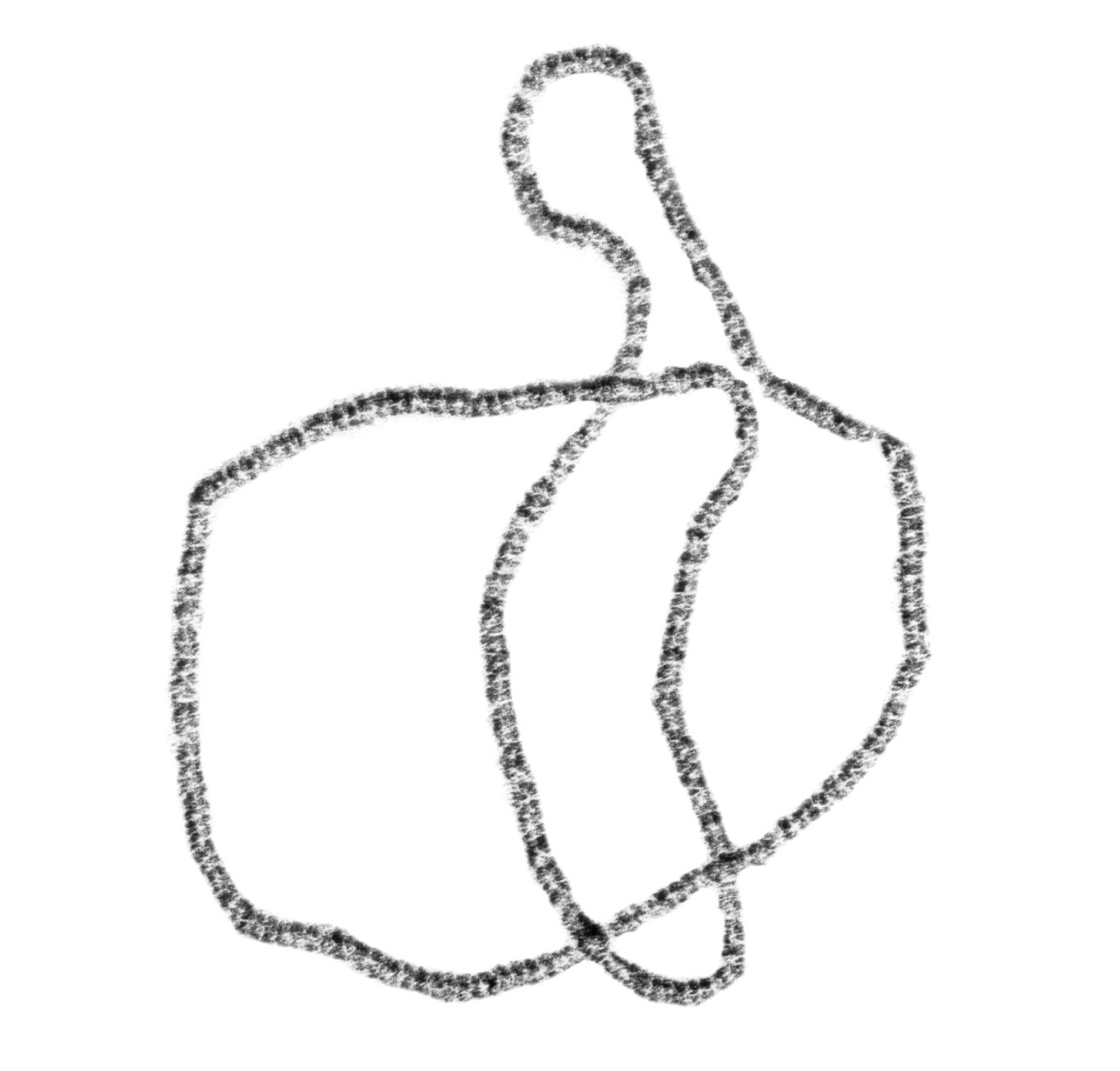
Do you see any questions in knot theory being in the potentially impossible class?
Certainly, the classification of knots. I don’t think we yet have the tools we need. It may be so hard that some people don’t even consider it a legitimate question; it’s so far beyond what they can even imagine doing. Personally, I think nothing is impossible, it’s just a matter of time and imagination.
Note
Cabinet acknowledges that this is the third occasion on which the name of fellow Brooklynite Maurice Sendak’s beloved book has been purloined for an article title (see issues 4 and 9 for previous occurrences). The next use of this title is slated for issue 44 for an article on Oscar Wilde’s influence on twentieth-century children’s literature.
Ken Millett is a mathematician living in Santa Barbara, CA and Grambois, France. A professor at the University of California, his publications include more than 60 books, pamphlets, and articles spanning mathematics education and outreach to computational physics, molecular biology, and the theory and applications of knots. Two of his papers appeared in Physical and Numerical Models in Knot Theory: Including Applications to the Life Sciences (World Scientific Publishing Company, 2005), which gives a contemporary perspective of applications of knots in the sciences.
Margaret Wertheim is director of the Los Angeles-based Institute For Figuring, an organization devoted to enhancing the public understanding of figures and figuring techniques www.theiff.org. Also a science writer, she pens the “Quark Soup” column for the LA Weekly, and is currently working on a book about the role of imagination in theoretical physics.
Spotted an error? Email us at corrections at cabinetmagazine dot org.
If you’ve enjoyed the free articles that we offer on our site, please consider subscribing to our nonprofit magazine. You get twelve online issues and unlimited access to all our archives.